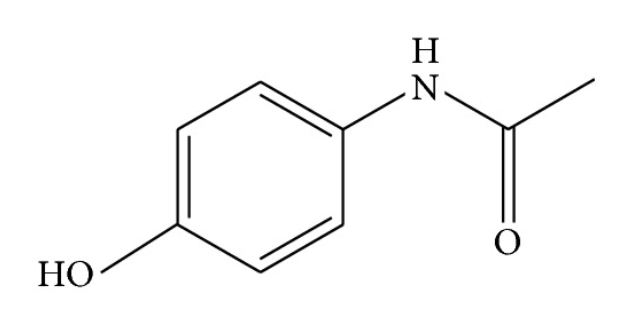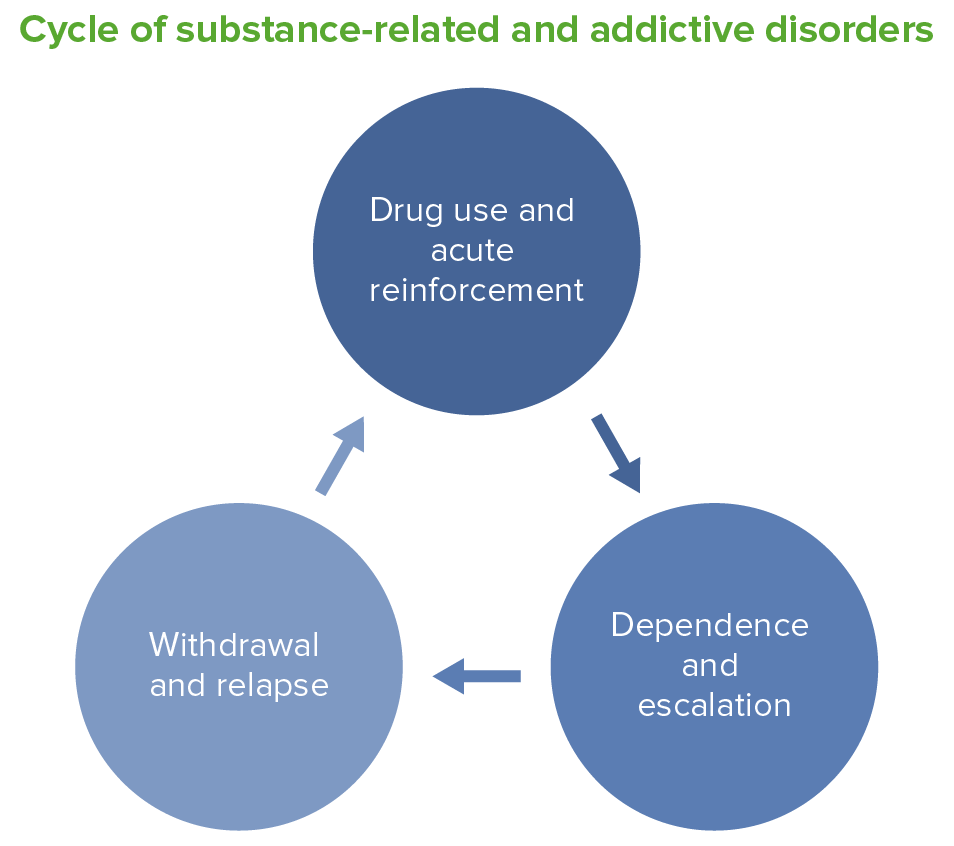Playlist
Show Playlist
Hide Playlist
Acetaminophen and Steroids – Drugs of Abuse
-
Slides DrugsOfAbuse Toxicology3.pdf
-
Download Lecture Overview
00:01 Hello, welcome to the pharmacology lectures by Lecturio. 00:05 Today we're going to be talking about toxicology and acetaminophen overdose. 00:11 So what is acetaminophen? Acetaminophen is the most commonly used analgesic medication on the planet. 00:17 It comes in various forms, whether it's Tylenol or Anacin or Tempra or various other formulations and products. 00:25 Acetaminophen with codeine, often called Tylenol number 1, number 2, or number 3 refers to a combination with codeine in various doses. Paracetamol and acetaminophen are essentially the same thing, but you'll often see paracetamol uses the drug name in the United Kingdom, in Europe, and in the Middle East. 00:45 And phenacetin is a prodrug that is metabolized into acetaminophen but it is no longer available. 00:53 Acetaminophen has a maximum dose of about 4 g/day in an average person. 00:58 It must be metabolized before it can be excreted by the kidney. 01:02 It is actually broken down inside the liver. So, the liver has a cytochrome system that brings it down to a toxic intermediate, and then eventually gets converted by phase 2 reactions. 01:14 Alcoholics, because they have hepatic toxicity or hepatic cirrhosis, are prone to acetaminophen toxicity because they have induction of the cytochrome system which creates more of these toxic intermediates and the glucuronidation process is not able to keep up. 01:32 That glucuronidation is a phase 2 reaction. We covered that in the pharmacokinetic section of our lectures earlier. 01:41 If the substrates are lacking, toxicity is actually going to be more likely. 01:45 So, it's important to know what your patient's clinical status is like. 01:51 In the first 24 hours of acetaminophen toxicity, they will complain of nausea, of vomiting, stomach pain and a loss of appetite. They often will look pale on physical exam. 02:03 They complain of fatigue and they often are sweating. It's sometimes hard to tell these toxic patients apart from other types of toxicities. It's important to know when and how much they've ingested. 02:18 In the next 24 to 72 hours, their pain changes. Instead of complaining of generalized stomach pain, they complain of more specific right upper quadrant pain. Their urine turns a very dark colour and sometimes they have oliguria or reduction of urine output. They often look a bit jaundiced. 02:35 So, instead of looking pale, they start to turn a little bit yellow, and you sometimes will see some scleral icterus or yellowing of the corneal of white part of the eye. 02:45 In the next time period, between 3 and 5 days, they complain of fever, lightheadedness, syncope, rapid heart rate, shortness of breath, hunger, tremor, confusion, coma, and sometimes blood in the urine as well. 03:03 Now, how is it that we determine whether we're going to treat with an antidote or not? This is a very famous nomogram that it's used old-school, nowadays, we have apps on our iPhone that have essentially replace the nomogram. 03:16 But what it does is it gives us an idea of who is going to be toxic and have long term side effects. 03:22 Anybody above that treatment line, we treat with acetylcysteine or mucomyst. 03:28 What this line does is it gives us an idea of who is going to be at risk for toxicity and who is going to be not at risk for toxicity. 03:38 Now, in general, you notice that that line doesn't extend under four hours. 03:43 If the patient shows up under four hours, and you're suspecting that the patient has Tylenol toxicity, then what you want to do is treat them with mucomyst. Because you don't want to take the chance. 03:56 Mucomyst is a very nontoxic agent. We use it all the time. 04:00 So, it's important to treat if you don't know, or treat if you're sure you know. 04:06 And only don't treat with mucomyst when you know that they are under that treatment line. 04:10 On the vertical axis, you can see the plasma concentration, and on the horizontal axis, you can see the number of hours. 04:18 The next category of drugs are steroids. Now, we know steroids from muscle builders and performance athletes, but steroids are actually clinically used. So, sometimes we use it in people who've had injury and we want to rebuild musculature, sometimes we use it in growth abnormalities. So, steroid are clinically used. 04:36 Now, the side effects of inappropriate steroid use is acne. The most common. So, you'll see severe acne in people's faces. 04:44 We also see premature closure of growth plates in young patients. 04:48 So, young men, generally in their 14 to 16 years of age, try to use steroids to gain greater muscle mass. 04:57 Unfortunately, what they're also doing is they're going to limit their eventual height by prematurely closing those growth plates in the bone. 05:05 It causes virilisation of females. It causes hepatic dysfunction. 05:10 And also it increases your risk of myocardial infarction. 05:14 Now, there's going to be behavioural changes too. We all know this is roid rage. 05:18 It increases libido sometimes. It definitely increases aggression. 05:23 And you start to see very violent, very aggressive kind of tendencies in these patients.
About the Lecture
The lecture Acetaminophen and Steroids – Drugs of Abuse by Pravin Shukle, MD is from the course Toxicology. It contains the following chapters:
- Acetaminophen
- Steroids
Included Quiz Questions
A patient was found in her nursing home with an empty bottle of pills. She complains of right upper quadrant pain. She looks jaundiced. Based on the clinical picture, how long ago do you think she ingested acetaminophen?
- 48 hours ago
- 24 hours ago
- 4 hours ago
- 2 hours ago
- 30 minutes ago
What is NOT a typical manifestation of acetaminophen toxicity during the initial 24 hours?
- Jaundice
- Diaphoresis
- Pallor
- Fatigue
- Vomiting
Which medication is the most appropriate for acetaminophen poisoning?
- N-acetylcysteine
- Naloxone
- Fomepizole
- Paracetamol
- Fentanyl
When should treatment not be administered for acetaminophen overdose?
- Treatment should not be administered when a patient ingested acetaminophen over 4 hours ago and the concentration is under the toxicity line on the nomogram.
- Treatment should not be administered when the patient ingested acetaminophen under 4 hours ago and the concentration is above the toxicity line on the nomogram.
- Treatment should not be administered when the patient ingested acetaminophen over 4 hours ago and the concentration is above the toxicity line on the nomogram.
- Treatment should not be administered when the patient ingested acetaminophen under 4 hours ago and the concentration is under the toxicity line on the nomogram.
- Treatment should always be administered in acetaminophen overdose.
Customer reviews
5,0 of 5 stars
| 5 Stars |
|
5 |
| 4 Stars |
|
0 |
| 3 Stars |
|
0 |
| 2 Stars |
|
0 |
| 1 Star |
|
0 |





